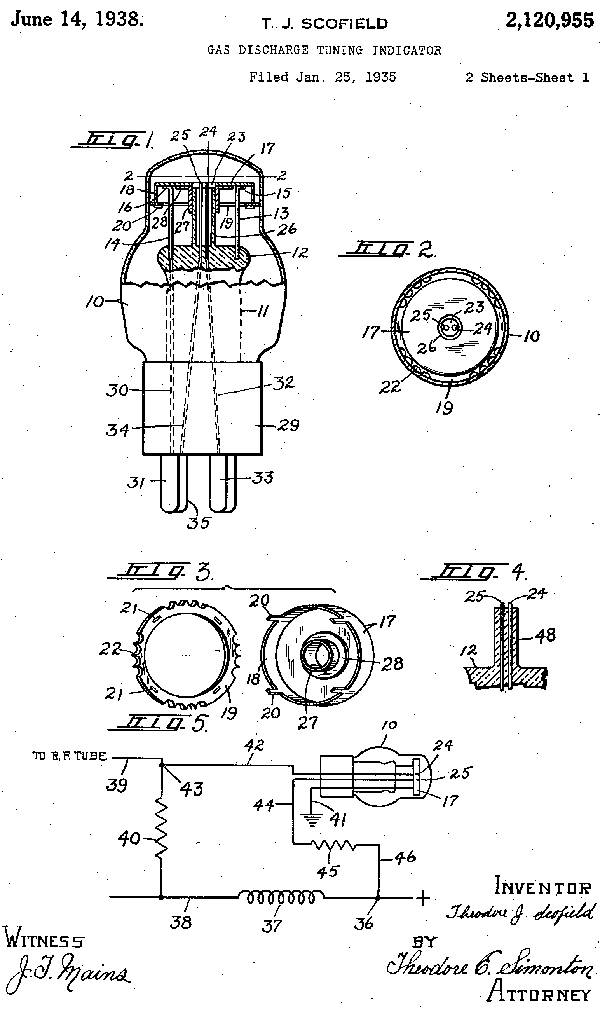The 1935 Sparton Viso-Glo VG-1
An odd neon tuning indicator
For the 1935 model year, Sparton included an unusual tuning indicator on their high-end models such as the models 134 and 136 Triolians, the 10 tube model 104, the 8 tube model 83 plus a few others.
The Viso-Glo VG-1 is a neon type indicator that functions on the same principle as the Tune-A-Lite or Flash-O-Graph used by Atwater Kent, Kolster International and FADA a couple years earlier. The tube consists of a round metal disk with a hole near the edge. In this hole are two small electrodes. The large disk is the Cathode while the two small electrodes are an Anode and a Pilot Anode. In operation, the orange neon glow starts out on the metal Cathode disk near the two Anodes and expands outward and upward across the metal disk as signal strength increases.
Unfortunately, these tubes are few and far between. Finding one usually means finding a Sparton radio which uses the VG-1 such as the models listed above. Sadly, most have been well used and the glass has a silver deposit obscuring the neon glow.
I hope to have a video of in operation on this site one day.
In the meantime, here is some information and links about this obscure tuning indicator

The patent belongs to a Theodore J. Scofield who worked for Sparks Withington.The patent was applied for on January 25, 1935 and granted June 14, 1938. By then, the tube was no longer being used as Sparton adopted the 6E5 Magic-Eye for the 1936 model year. The VG-1 simply slipped into obscurity.


More information about the VG-1 can be found here.
The Sparton VG-1 By Konrad Birkner on RadioMuseum.org
Also the similar Tune-A-Lite.
The Tune-A-Lite by Joe Sousa and Dietmar Rudolph on RadioMuseum.org
Here is a video of the Tune-A-Lite in operation.
Atwater Kent model 96 by Bill Liers
There will be more to come as the project progresses.
Thank you for reading!
Home


